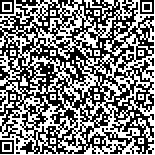下载中心
优秀审稿专家
优秀论文
相关链接
摘要

全球导航卫星系统遥感(GNSS remote sensing)属卫星导航应用与遥感的一个交叉学科范畴。GNSS系统除传统的导航、定位、授时等功能外,可免费提供全球覆盖、高时间分辨率的L波段(1-2 GHz)微波信号用于遥感探测。继GNSS折射信号被率先用于地震、大气水汽等的探测以来,利用GNSS反射信号进行海洋、陆表参数估算,近年来成为国际GNSS应用研究前沿热点。随着中国自主北斗导航系统的蓬勃发展,将会为GNSS遥感带来新的发展契机和空间。本文从GNSS遥感的两个重要学科分支,即GNSS折射信号遥感(GNSS refractometry)和GNSS反射信号遥感GNSS-R(GNSS Reflectometry),回顾在这一交叉学科领域近几十年的发展,并简要分析GNSS遥感发展面临的机遇与挑战。
The Global Navigation Satellite Systems (GNSSs), including the United States Global Positioning System (GPS), Russian GLONASS, the European Union's Galileo, and China's BeiDou, provide L-band microwave signals with high temporal resolution. These systemshave extended the applications of the GNSS from positioning/navigation to remote sensing. Since the 1990s, the versatile refracted GNSS signals have been successfully demonstrated to sound the ionosphere and troposphere. In the pasttwo decades, reflected signals, which involve making measurements of the reflections from the Earth, have shown theircapacity for earth observations over wateror land. On the basis of such background, GNSS remote sensing, as a hybrid of GNSS and remote sensing, has been developed over the years. The concepts of GNSS remote sensing can be summarized into two categories:GNSS refractometryand GNSS reflectometry (GNSS-R). The applications of GNSS remote sensing involves atmospheric water vapor, seismo-ionospheric disturbances, oceans, lands, hydrology, and the cryosphere. To further promote the applications of the GNSS remote sensing technology in atmospheric, seismic, and water cycle studies, this review systematically introduces the international and domestic forefront of GNSS remote sensing technology and its applications, with a focus on GNSS/meteorology, GNSS ionospheric seismology, GNSS radio occultation, ocean observations, land applications, cryosphere applications,and missions of GNSS-R. We also discuss and provide an overview of the bottlenecks related to the further development of each branch of GNSS remote sensing. The next generations of GNSS systems, especially GPS Ⅲ and BeiDou Ⅱ, are expected to show improved performance and offer excellentcapabilities to users around the globe. This study can provide references for the future development of GNSS remote sensing technologiesand otherrelated subjects.

